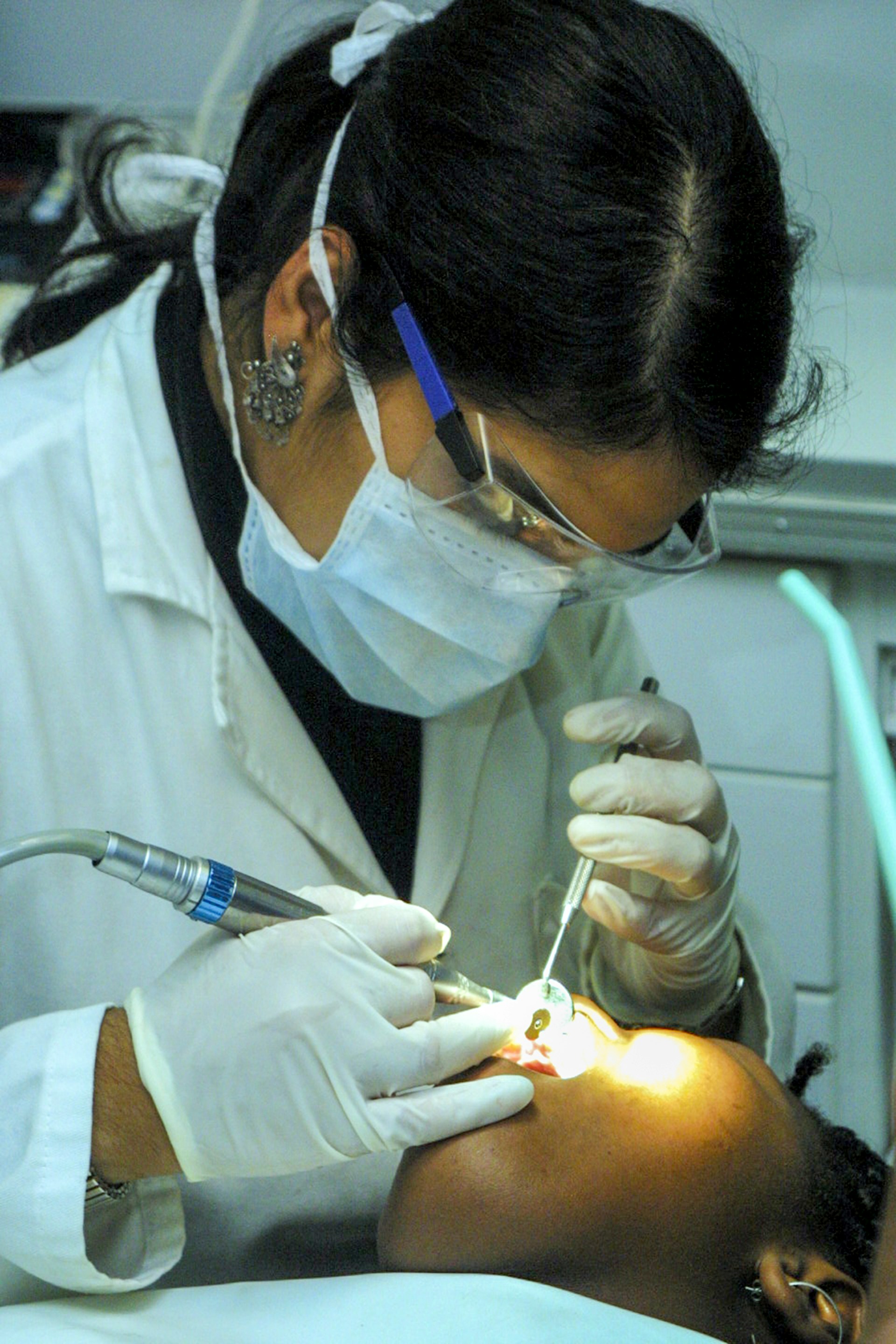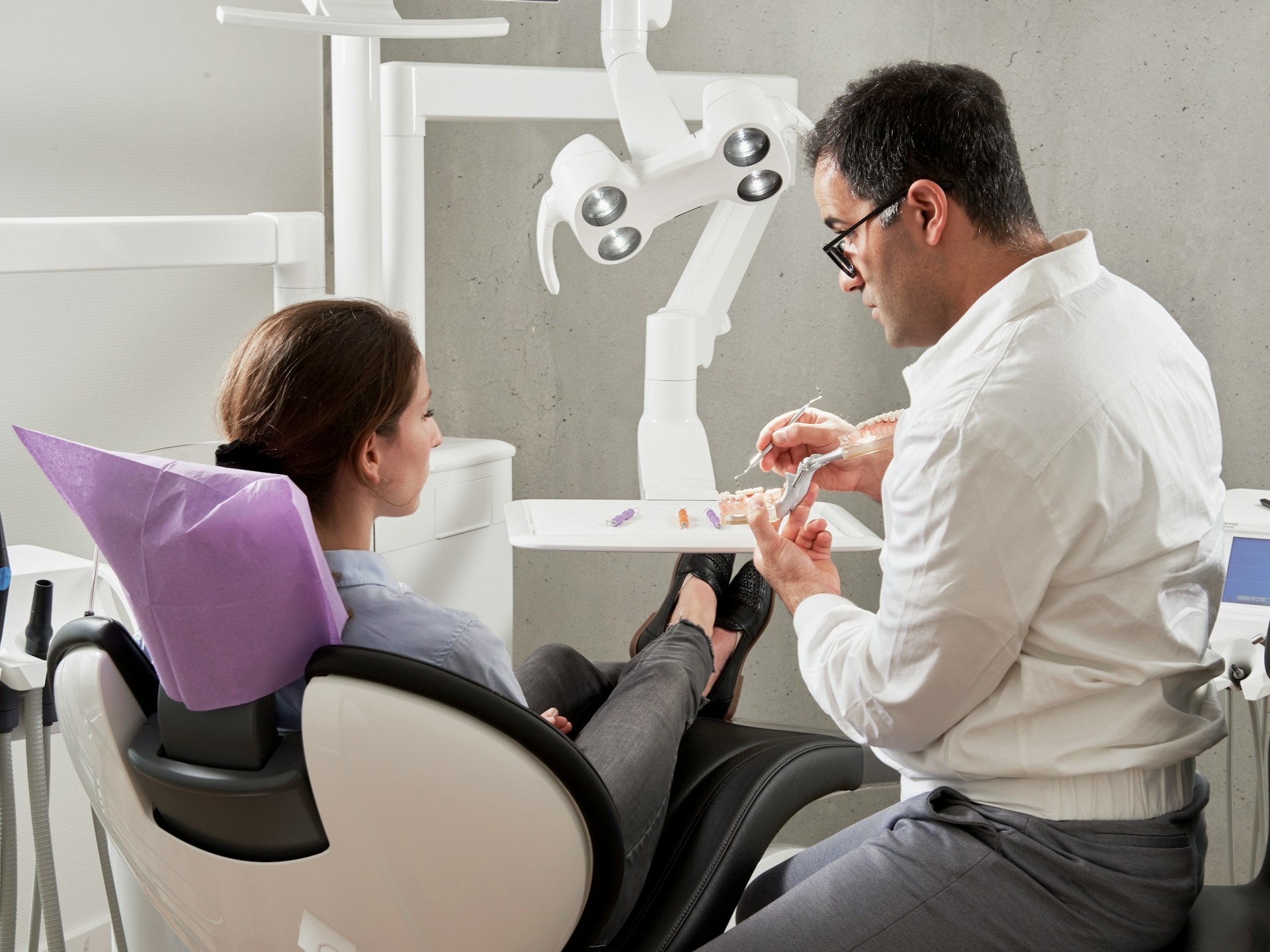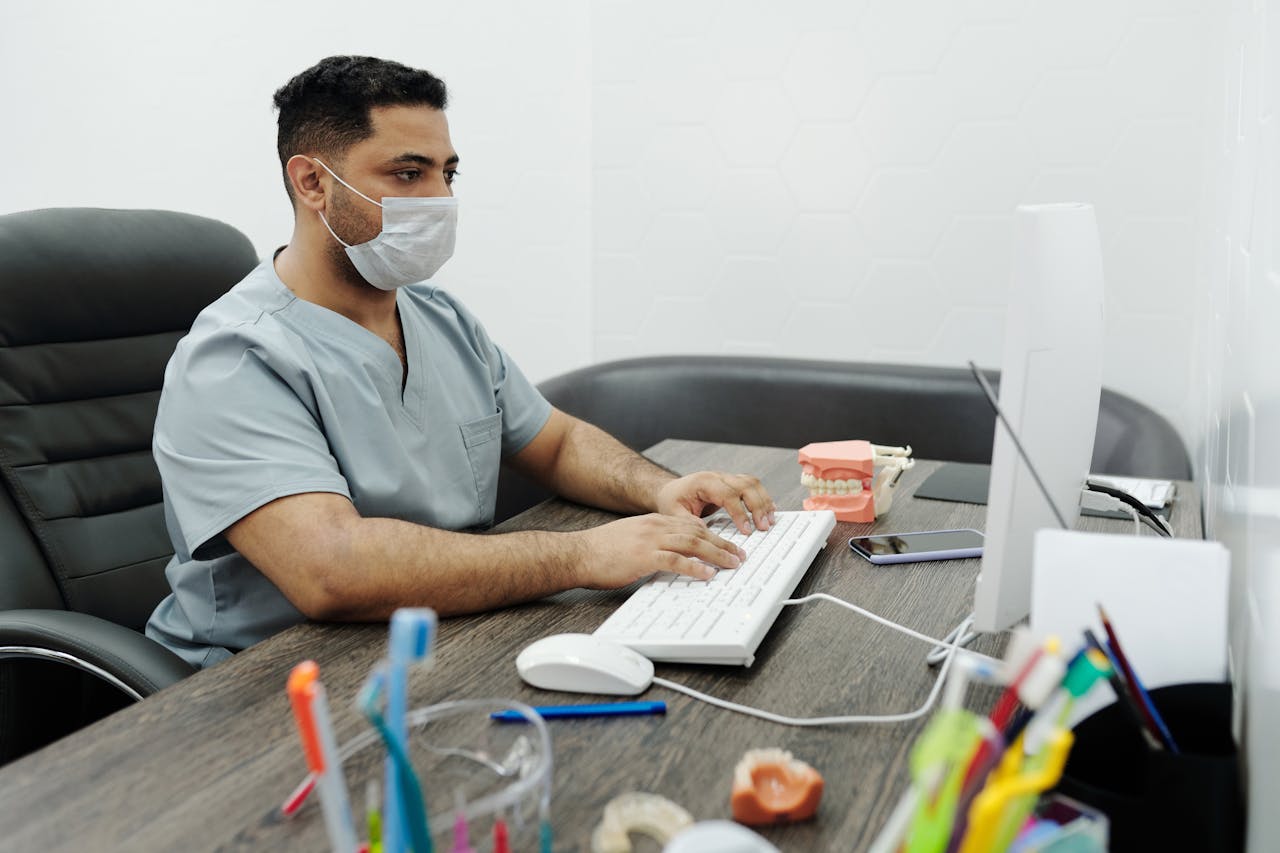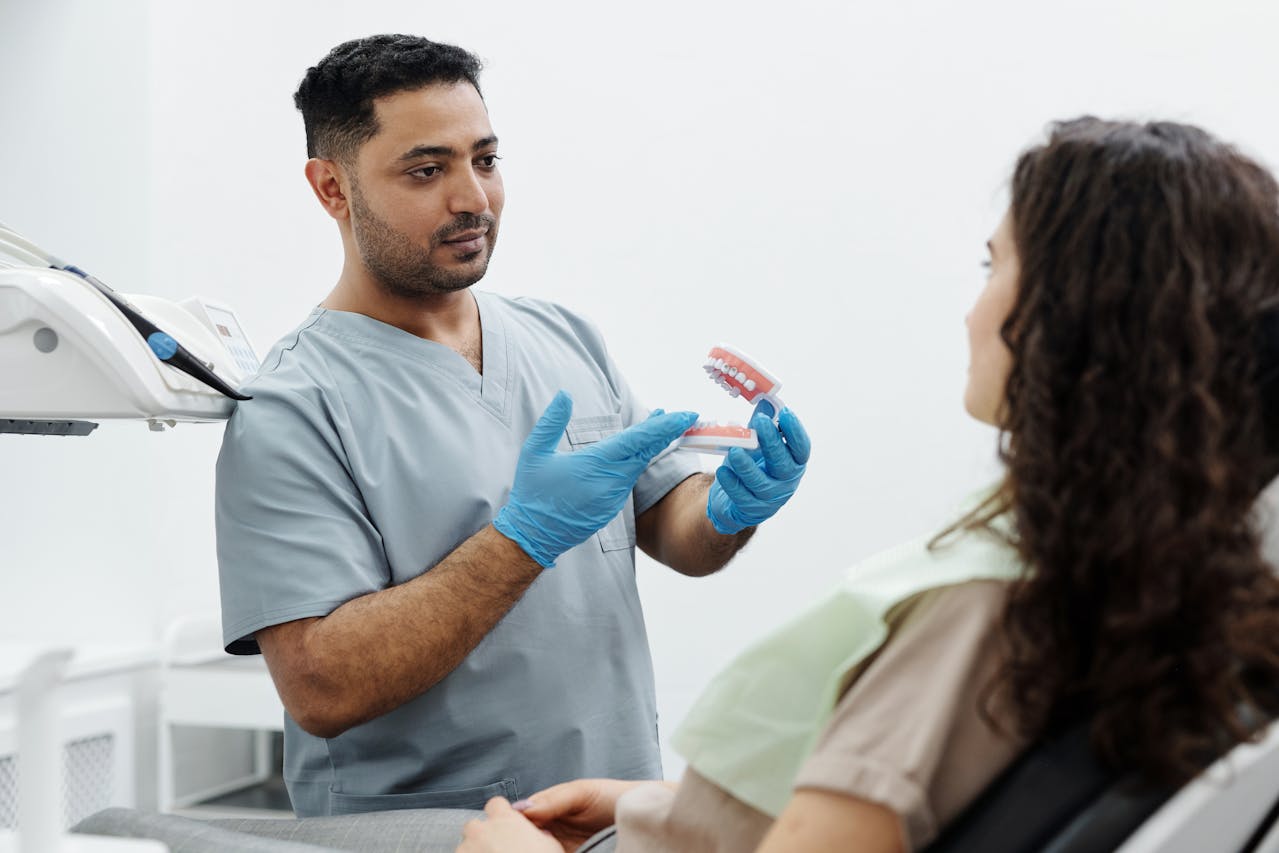How to Handle Urgent Dental Calls with AI Prioritization

Dental practices lose approximately 71 potential new patients for every 100 calls received due to poor call handling procedures. With 32% of phone calls going unanswered during business hours and 68% remaining unanswered overall, practices face significant revenue leakage while patients with urgent needs struggle to access timely care.
The solution lies in AI-powered triage systems that categorize dental emergencies with precision while ensuring 24/7 availability. Arini's AI receptionist platform addresses this critical gap by answering every call, identifying urgent cases requiring immediate attention, and scheduling appropriate appointments directly into practice management systems.
Key Takeaways
- Dental practices lose 71 potential patients per 100 calls due to inefficient call handling systems
- 2 million Americans visit emergency departments annually for dental problems that could be managed in dental offices
- AI triage reduces mis-triage rates by 0.3-8.9% compared to traditional methods while providing 24/7 coverage
- Effective triage categorizes cases into three levels: true emergencies (life-threatening), urgent care (same-day needed), and routine appointments
- Machine learning models achieve a high accuracy rate in classifying emergency conditions when properly implemented with human oversight
- HIPAA-compliant AI systems with human escalation protocols ensure patient safety while optimizing practice efficiency
What is Triage in Dental Practice Management?
Dental triage is the systematic process of sorting and classifying patients based on the urgency of their dental needs to determine priority of care and appropriate treatment timing. The American Dental Association defines dental emergencies as potentially life-threatening conditions requiring immediate treatment to stop bleeding, remedy infection, or alleviate severe pain. However, not all urgent dental issues qualify as emergencies, making effective triage essential for both patient care and practice operations.
Core Components of Dental Call Triage
Effective dental triage encompasses three distinct categories that guide appropriate response protocols:
- True emergencies: Uncontrolled bleeding, airway-compromising infections, severe trauma with potential airway compromise
- Urgent care: Severe pain, dental abscesses, trauma requiring same-day attention, post-procedural complications
- Routine care: Preventive visits, elective procedures, follow-up appointments
The primary goal of triage is ensuring patients receive appropriate care at the right time while optimizing dental practice resources. This systematic approach prevents unnecessary emergency department visits while guaranteeing genuinely urgent cases receive immediate attention.
Triage Priority Levels: Emergency vs. Routine
Understanding the distinction between emergency and routine cases is fundamental to effective triage. True dental emergencies require immediate intervention to prevent life-threatening complications, while urgent cases need same-day attention to prevent condition deterioration or significant patient suffering. Routine cases can be scheduled according to normal availability without risk to patient health.
Research shows that 68.5% of dental emergency calls during the COVID-19 pandemic were successfully managed by trained triage nurses without requiring dentist intervention, demonstrating that structured protocols can effectively handle most urgent dental situations.
How Patient Triage Differs in Dental vs. Hospital Settings
While medical triage in hospital settings focuses on life-threatening conditions across all body systems, dental triage concentrates specifically on oral health emergencies with distinct urgency factors. The dental context requires specialized assessment protocols that account for the unique nature of dental pain, trauma, and infection patterns.
Common Dental Emergency Categories
Dental emergencies fall into specific categories that require immediate recognition:
- Acute dental pain: Severe, unrelenting pain that prevents normal function
- Trauma assessment: Tooth avulsion, fractures, or soft tissue injuries
- Infection urgency: Facial swelling, fever, or signs of systemic involvement
- Bleeding protocols: Uncontrolled post-extraction bleeding or trauma-related hemorrhage
- Medical history complications: Conditions requiring immediate attention due to the patient's medical status
Time-Sensitive Dental Conditions
Certain dental conditions demonstrate clear time sensitivity that affects treatment outcomes:
- Tooth avulsion: Reimplantation success drops dramatically after 30-60 minutes
- Alveolar osteitis (dry socket): Affects up to 30% of lower third molar extractions and requires prompt management
- Acute infections: Can progress to life-threatening conditions like Ludwig's angina
- Post-procedural complications: Require timely intervention to prevent serious sequelae
Unlike hospital emergency departments that focus primarily on pain alleviation rather than definitive dental procedures, dental office triage aims to provide appropriate definitive care while managing symptoms effectively.
Why Traditional Dental Call Handling Fails During High-Volume Periods
Traditional dental practice call management faces significant operational challenges that directly impact patient care and practice revenue. Research demonstrates that 32% of phone calls to dental offices go unanswered during regular business hours, with only 42% of answered calls resulting in scheduled appointments. This inefficiency creates a cascade of negative outcomes for both patients and practices.
The Cost of Missed Urgent Calls
The financial impact of missed calls extends beyond immediate appointment loss:
- Each missed dental appointment costs practices an average of $200 in lost revenue
- Practices missing 120 new patient calls annually lose substantial revenue potential
- Patient frustration leads to negative reviews and reduced referral likelihood
- Urgent cases may escalate to more complex, costly treatments when delayed
Front-Desk Bottlenecks During Peak Hours
Front desk staff face impossible demands during high-volume periods:
- Simultaneous responsibilities: greeting in-person patients, handling paperwork, answering phones
- Cognitive overload from switching between urgent and routine inquiries
- Inconsistent application of triage protocols due to time pressure
- Staff burnout from constant phone demands and patient frustration
This operational strain creates a lose-lose situation where patients with genuine emergencies struggle to access timely care while practices lose revenue and staff experience burnout. The 68% overall unanswered call rate demonstrates a systemic failure that requires technological intervention.
How AI Scheduling Assistants Identify Urgent Dental Cases
AI scheduling assistants leverage natural language processing (NLP) and machine learning algorithms to analyze patient-reported symptoms and categorize urgency levels with remarkable accuracy. These systems detect key indicators that signal true emergencies versus routine concerns, enabling appropriate prioritization without human intervention for straightforward cases.
Key Urgency Indicators AI Can Detect
Advanced AI systems recognize specific linguistic patterns and symptom descriptors that indicate urgency:
- Pain level detection: Keywords indicating severe, unrelenting, or worsening pain
- Symptom keywords: Terms like "swelling," "bleeding," "fever," "trauma," or "infection"
- Time sensitivity phrases: "Can't wait," "getting worse," "since yesterday," "immediate"
- Functional impact descriptions: "Can't eat," "can't sleep," "can't work," "severe discomfort"
How AI Parses Patient Descriptions of Pain
NLP algorithms analyze both explicit and implicit pain indicators:
- Numeric pain scales (1-10 descriptions) provide quantitative urgency assessment
- Descriptive pain characteristics (throbbing, sharp, constant, radiating) offer a qualitative context
- Duration and progression patterns indicate condition severity
- Associated symptoms (fever, swelling, difficulty swallowing) signal systemic involvement
Research shows machine learning triage algorithms reduce mis-triage rates by 0.3-8.9% compared to traditional methods, with some models achieving 95% accuracy in classifying time-critical conditions. The Arini AI Receptionist Platform uses natural language processing tuned specifically for dental workflows to answer 100% of inbound calls and handle FAQs while accurately identifying appointment urgency.
Building a Triage Protocol for Your AI Scheduling System
Creating effective AI triage requires establishing clear protocols that translate clinical urgency into scheduling priorities. This systematic approach ensures consistent application of triage principles while accommodating practice-specific preferences and provider availability.
Creating Urgency-Based Scheduling Rules
Effective triage protocols establish clear scheduling rules based on urgency categories:
- Emergency slots: Reserved daily for true emergencies (uncontrolled bleeding, airway compromise)
- Same-day availability: Dedicated slots for urgent cases (severe pain, abscesses, trauma)
- Priority scheduling: Expedited booking for urgent cases within 24-48 hours
- Routine scheduling: Standard availability for preventive and elective care
Mapping Symptoms to Appointment Types
The protocol should clearly define which symptoms trigger specific appointment types:
- Emergency appointment: Uncontrolled bleeding, rapidly spreading swelling, trauma with airway concern
- Urgent same-day: Severe pain (8-10/10), dental abscess with swelling, post-extraction complications
- Priority scheduling (24-48 hours): Moderate pain (5-7/10), broken restorations, sensitivity issues
- Routine scheduling: Preventive care, cosmetic consultations, follow-up appointments
The Call Answering & Scheduling Module supports custom scheduling rules and block scheduling to prioritize urgent appointments while maintaining availability for routine care, ensuring your AI system reflects your practice's clinical priorities.
Integrating AI Triage with Dental Practice Management Software
Seamless integration between AI triage systems and practice management software (PMS) ensures real-time scheduling accuracy and eliminates double-booking risks. This technical integration transforms AI from a standalone tool into an extension of your clinical team.
How AI Writes Directly to Your PMS
Modern AI systems integrate directly with popular dental PMS platforms:
- Real-time availability checking prevents scheduling conflicts
- Automatic appointment creation eliminates manual data entry
- Patient information synchronization ensures consistent records
- Confirmation messages and reminders reduce no-show rates
Ensuring Data Accuracy Across Systems
Integration quality affects both operational efficiency and patient safety:
- One-click integrations with OpenDental, Dentrix, EagleSoft, and Denticon
- Real-time data synchronization prevents information discrepancies
- Secure API connections protect patient information during transmission
- Audit trails track all scheduling changes and AI decisions
The Integration & Workflow Customization Module provides seamless PMS integration with customizable call flows per practice, ensuring your AI triage system works harmoniously with your existing clinical workflows.
Using Reclaim AI Principles to Protect Emergency Appointment Slots
Calendar optimization strategies ensure emergency appointment slots remain available for genuine urgent cases while maximizing overall schedule utilization. This balanced approach prevents routine appointments from consuming all available capacity while maintaining efficient practice operations.
How to Reserve Slots for Same-Day Emergencies
Effective slot protection strategies include:
- Buffer slots: Designated daily time blocks reserved exclusively for emergencies
- Dynamic rescheduling: AI can suggest alternative times for routine appointments when emergencies arise
- Capacity planning: Analytics identify optimal emergency slot allocation based on historical demand
- Priority allocation: Clear rules determine when emergency slots can be released for routine use
Balancing Routine and Urgent Appointments
The goal is to maximize schedule utilization without compromising emergency access:
- Monitor emergency slot utilization rates to adjust allocation
- Implement waitlist systems for routine appointments when schedules are full
- Use AI analytics to predict high-demand periods requiring additional emergency capacity
- Establish clear protocols for when routine appointments can be rescheduled to accommodate emergencies
This strategic approach ensures practices never miss urgent patient opportunities while maintaining efficient operations for routine care.
Training Your AI to Recognize Dental Emergency Keywords
AI systems improve over time through continuous learning from patient interactions and practice-specific feedback. This training process enhances accuracy in recognizing dental emergency keywords and reduces false positives or missed urgent cases.
Essential Dental Emergency Phrases
Effective AI training includes comprehensive dental emergency vocabulary:
- Pain descriptors: "excruciating," "unbearable," "worst pain ever," "can't function"
- Symptom indicators: "facial swelling," "uncontrolled bleeding," "pus discharge," "fever with toothache"
- Trauma terminology: "knocked out tooth," "broken jaw," "facial laceration," "avulsed tooth"
- Medical urgency phrases: "allergic reaction," "difficulty breathing," "rapidly spreading," "systemic symptoms"
How AI Learns from Missed Cases
Continuous improvement mechanisms include:
- Pattern recognition from successful human triage decisions
- Feedback loops when AI classifications differ from actual clinical urgency
- Machine learning adaptation based on practice-specific emergency patterns
- Regular updates incorporating new dental emergency terminology and scenarios
The Patient FAQ & Communication Module learns over time with additional FAQs and maintains a customizable knowledge base that improves with each patient interaction, ensuring your AI system becomes increasingly accurate at recognizing genuine emergencies.
When to Escalate: AI Handoff Protocols for Critical Cases
Clear escalation protocols ensure patient safety by defining when AI systems should transfer calls to human staff. These protocols balance automation efficiency with appropriate human oversight for complex or high-risk situations.
Creating Clear Escalation Rules
Effective escalation protocols specify exact conditions requiring human intervention:
- Severity thresholds: Pain levels above 8/10, rapidly spreading infections, uncontrolled bleeding
- Medical complexity: Patients with significant medical histories, anticoagulant use, or immunosuppression
- AI confidence levels: Low confidence classifications automatically escalate to human review
- Patient preference: Options to speak with human staff at any point during AI interaction
What AI Should Never Handle Alone
Certain situations require immediate human assessment:
- Severe trauma with potential airway compromise
- Patients reporting suicidal ideation or severe psychiatric emergencies
- Complex medical histories require nuanced clinical judgment
- Language barriers are preventing accurate symptom reporting
- Situations where patients cannot clearly communicate their symptoms
The Analytics & Notifications Module sends real-time notifications for booked appointments and tracks call patterns to identify cases requiring staff attention, ensuring seamless handoff when human intervention is necessary.
Measuring Triage Accuracy and Response Times with AI Analytics
Data-driven optimization requires tracking key performance metrics that measure both triage accuracy and operational efficiency. These analytics enable practices to continuously refine their AI systems and demonstrate measurable improvements in patient care and revenue capture.
Key Metrics for Triage Performance
Essential performance indicators include:
- Triage accuracy rate: Percentage of AI classifications matching actual clinical urgency
- Response time: Average time from call initiation to appointment scheduling
- Emergency slot utilization: Percentage of reserved emergency slots actually used
- Missed urgent calls: Calls classified as routine that later required emergency care
- Revenue impact: Financial value of captured appointments versus historical missed calls
How to Audit AI Triage Decisions
Regular performance audits ensure ongoing accuracy:
- Compare AI classifications against actual clinical outcomes
- Review cases where human staff overrode AI recommendations
- Analyze patterns in missed urgent cases to improve keyword recognition
- Monitor patient satisfaction scores related to call handling experiences
- Track referral patterns to identify potential triage errors
The Analytics & Notifications Module tracks call volume, answered calls, missed calls, and booked appointments with revenue impact metrics and weekly reporting, providing the data foundation for continuous improvement.
Ensuring 24/7 Urgent Call Coverage with AI Scheduling
24/7 availability addresses the critical gap in after-hours emergency access that drives patients to costly emergency department visits. AI scheduling ensures urgent dental needs receive appropriate attention regardless of time of day, improving patient outcomes while capturing revenue opportunities.
Handling After-Hours Dental Emergencies
AI systems provide consistent emergency response outside business hours:
- Immediate triage and classification of urgent cases
- Clear guidance for patients requiring emergency department care
- Same-day appointment scheduling for the next business day when appropriate
- Automated follow-up for cases requiring monitoring
Reducing Patient Frustration from Unanswered Calls
24/7 availability eliminates common patient frustrations:
- No more voicemail abandonment during peak hours
- Consistent information delivery regardless of staff availability
- Immediate appointment scheduling rather than phone tag
- Clear expectations about response timing and next steps
The Arini AI Receptionist Platform answers 100% of inbound calls 24/7, eliminating voicemail and patient frustration while booking appointments directly into practice management systems, ensuring no urgent case goes unaddressed.
Compliance and HIPAA Considerations for AI-Powered Triage
HIPAA compliance is non-negotiable for any AI system handling patient health information. Dental practices must ensure their AI triage solutions meet healthcare privacy and security standards while maintaining appropriate data handling protocols.
HIPAA Requirements for AI Call Handling
Key compliance requirements include:
- Business Associate Agreements (BAAs) between practices and AI vendors
- Data encryption for transmission and storage of Protected Health Information (PHI)
- Secure cloud infrastructure with appropriate access controls
- Regular security audits and vulnerability assessments
- Clear data retention and deletion policies
Protecting Patient Information During Triage
Privacy protection strategies include:
- Minimal data collection focused only on the necessary triage information
- Role-based access controls limit staff access to patient information
- Audit trails track all access to patient data
- Secure integration with practice management systems
- Transparent privacy policies communicated to patients
The Arini AI Receptionist Platform is HIPAA compliant for all patient interactions with role-based access controls, secure PMS integrations, and patient privacy safeguards aligned with healthcare standards, ensuring your practice maintains regulatory compliance while leveraging AI efficiency.
Frequently Asked Questions
Q: Can AI accurately identify true dental emergencies versus routine concerns?
A: AI systems achieve 95% accuracy in classifying emergency conditions when properly trained on dental-specific terminology and implemented with human oversight protocols. Machine learning models reduce mis-triage rates by 0.3-8.9% compared to traditional methods, but complex cases with ambiguous symptoms or significant medical histories should always include human review. The most effective systems combine AI efficiency with clear escalation protocols for high-risk situations.
Q: How does AI triage integrate with existing dental practice management software?
A: Modern AI triage systems offer one-click integrations with popular dental PMS platforms, including OpenDental, Dentrix, EagleSoft, and Denticon. These integrations enable real-time availability checking, automatic appointment creation, and seamless data synchronization. The integration process typically takes 1-2 days (or even more, depending on systems) with minimal disruption to existing workflows, and the AI system becomes an extension of your scheduling process rather than a separate tool.
Q: What happens when AI encounters a case it cannot classify?
A: AI systems with appropriate safeguards automatically escalate cases when confidence levels are low or when specific high-risk indicators are present. Patients can also request human assistance at any point during the AI interaction. Quality systems provide clear protocols for these handoffs, ensuring urgent cases receive immediate human attention while maintaining the efficiency benefits of automation for straightforward situations.
Q: Is AI call triage HIPAA compliant for dental practices?
A: Reputable AI triage systems designed for healthcare are HIPAA compliant and provide signed Business Associate Agreements (BAAs) defining their responsibilities for securing patient data. Key compliance features include data encryption, secure cloud infrastructure, role-based access controls, and regular security audits. Practices should verify these compliance measures before implementation and ensure their chosen vendor maintains appropriate healthcare-specific security standards.
Q: How long does it take to train an AI system on your practice's triage protocols?
A: Initial AI training typically takes 1-2 weeks, during which the system learns your practice's specific emergency definitions, scheduling rules, and provider availability patterns. However, AI systems continue learning and improving over time through each patient interaction. Most practices see significant accuracy improvements within the first 30 days as the system adapts to their unique patient population and clinical priorities.









